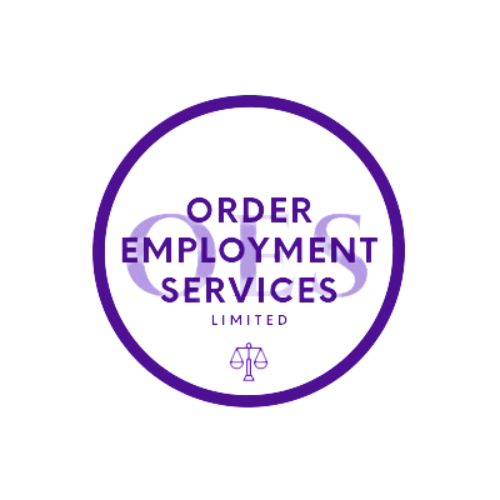
Empower Your SME: A Practical Guide to Equality and Diversity Management
Reduce operational costs
Increase profitability
Improve efficiency
Achieve business aims
Understanding and managing equality and diversity has become increasingly complex, especially for Small and Medium-sized Employers (SMEs). Balancing the layers of employee rights with the responsibilities of an employer is not just a legal necessity but a strategic imperative that can shape the culture and success of a business.
This guide aims to demystify what equality and diversity mean in the contemporary corporate context, ensuring that employers are well-equipped to manage these critical aspects effectively.
Understanding Equality and Diversity
At the heart of a thriving workplace is a robust understanding of equality and diversity. These terms encompass the legal and moral obligation to treat all employees fairly and without discrimination while recognising and valuing the diverse backgrounds, skills, and perspectives they bring to the company. The Equality Act serves as a cornerstone in this landscape, setting out the legal framework that protects employees against unfair treatment and promotes a more inclusive workplace. However, the implications of non-compliance extend beyond legal repercussions; they can have significant financial impacts due to penalties, tarnished reputations, and lost productivity. Employers must navigate this terrain with an informed, proactive approach, ensuring their businesses thrive through comprehensive equality and diversity policies.
Strategies for Equality and Diversity Management
Developing strategies for equality and diversity management is not a one-size-fits-all task. It requires a nuanced approach, tailored to the unique needs and challenges of SMEs. From crafting detailed equality and diversity training programs to establishing clear, transparent reporting mechanisms, the strategies should align with both the legal requirements and the company’s broader values. Embedding expert legal advice and HR planning into these strategies is crucial, as they provide the scaffolding for fair and legally compliant systems that support both the business objectives and employee wellbeing.
Technological Solutions for Equality and Diversity
In the age of digital transformation, technology offers powerful solutions for managing equality and diversity. There is a plethora of software and tools designed to assist SMEs in monitoring, reporting, and analysing equality and diversity metrics. Comparing these technological solutions requires a careful evaluation of their benefits against their cost, ensuring that the investment aligns with the company’s size and budget. These solutions should not only be cost-effective but also user-friendly and scalable, growing with the company’s evolving needs.
Embracing technology is not merely about keeping up with trends; it's about leveraging tools that can significantly enhance your equality and diversity initiatives. For SMEs, the right software can streamline processes such as tracking diversity metrics, managing complaints, and training staff. For instance, diversity analytics tools can provide insights into recruitment trends, pay equity, and promotion rates across different demographics. E-learning platforms can deliver comprehensive equality and diversity training across your organisation, ensuring all staff are educated on critical issues and company policies. When selecting these tools, it's vital to consider the user experience, ensuring they are accessible and straightforward to encourage widespread adoption among your team.
Equality and Diversity Examples
Understanding the theory behind equality and diversity is a foundational step, but observing these principles in action provides a different layer of insight. By examining case studies and real-world examples from SMEs who have excelled in managing equality and diversity, other businesses can learn valuable lessons. These narratives should not shy away from the challenges encountered; instead, they should highlight the learning opportunities and the tangible benefits realised through effective management of equality and diversity. Success stories serve as a testament to the positive impact that a well-implemented equality and diversity strategy can have on a company's culture and bottom line, offering a relatable blueprint for others to follow.
Let’s delve into a case study of a mid-sized tech company that exemplified the integration of equality and diversity. This company, facing a stark gender imbalance and a lack of ethnic diversity, undertook a thorough review of their hiring practices and workplace culture. They introduced unconscious bias training, established mentorship programs, and set clear diversity targets. Over two years, they saw a 40% increase in female leadership roles and a more culturally diverse workforce. However, it wasn’t without its challenges, including initial resistance to change and the need to revamp their talent acquisition strategy. These real-world insights can be invaluable for SMEs looking to undertake similar transformative journeys within their organisations.
OES Conclusion
Wrapping up this comprehensive guide, the significance of managing equality and diversity within SMEs cannot be overstated. The actionable strategies discussed here are designed not just to meet legal obligations but to foster an inclusive and equitable work environment that can attract and retain top talent, drive innovation, and enhance business performance. Ethical management of equality and diversity goes beyond compliance; it is a reflection of a company’s values and commitment to its people.
What next with equality and diversity
We invite you to take these insights and put them into practice within your organisation. Remember, managing equality and diversity effectively is not just about doing what is legally required; it's about doing what is right for your people and, ultimately, your business.
In taking the next step towards excellence in equality and diversity, it's important to remember that the journey does not end with the implementation of strategies and tools. Continuous improvement and engagement are key. Therefore, we encourage you to join our community committed to excellence in equality and diversity. Reach out for a consultation to see how your company can not only comply with the Equality Act but become a beacon of best practice in your industry.
Stay Informed: Subscribe to our newsletter to keep abreast of the latest in HR innovations and best practices.
Deepen Your Knowledge: Download our detailed eBook to gain more insights into HR Mastery.
Get Personalised Advice: Contact us for a personalised consultation to discuss how our services can be tailored to your unique needs and help you navigate the complexities of HR management.



